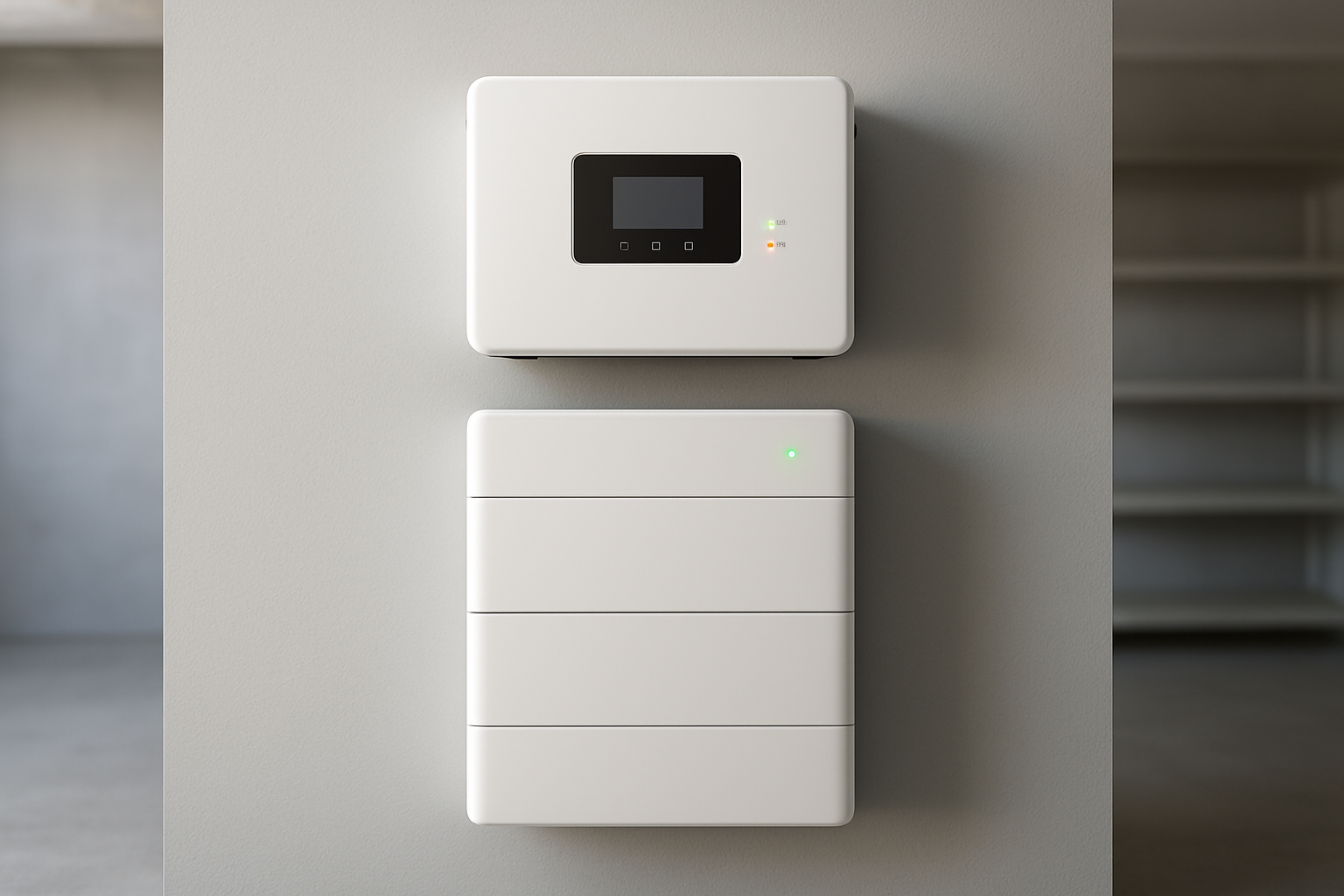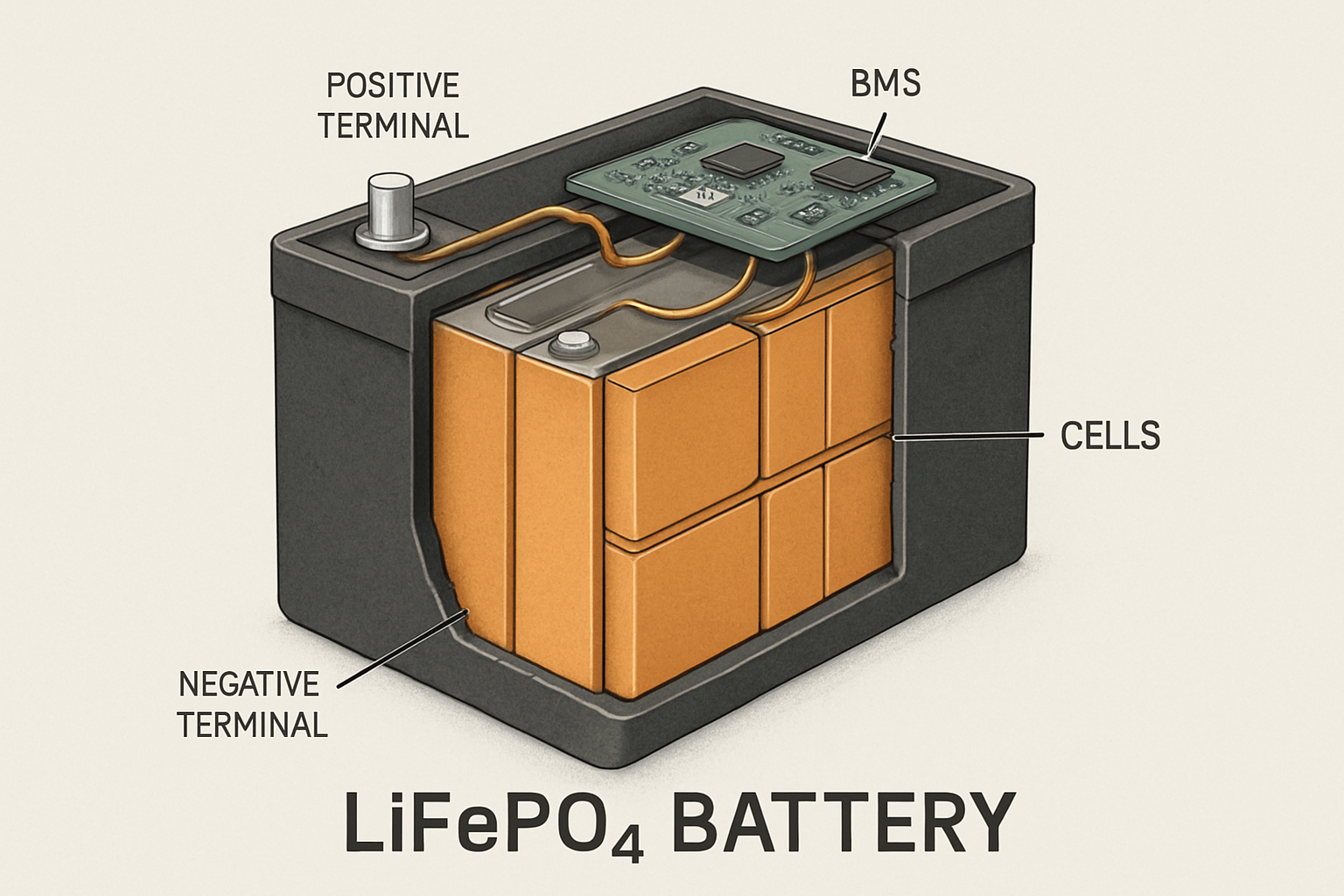The Battery Management System (BMS) is the brain of a modern LiFePO4 battery, providing critical protection to ensure safety and longevity. One of its most important functions is preventing over-discharge, a condition that can harm battery cells. When this protection is triggered, the battery appears 'dead', which can be alarming. This case study provides a practical walkthrough of how to diagnose and perform a BMS over-discharge reset, restoring your energy storage system to full operation.
The Scenario: Identifying the Over-Discharge Fault
Imagine your off-grid solar system suddenly shuts down. The lights are out, and your inverter is either off or displaying a low-voltage error. This is a common scenario when a battery has been discharged too deeply, causing the BMS to enter protection mode. Understanding the signs is the first step in the battery management system reset procedure.
Initial Symptoms and Diagnostics
The primary symptom is a complete loss of power from the battery bank. If you use a multimeter to measure the voltage at the battery terminals, you will likely read 0 volts or a negligible value. This doesn't mean the battery is destroyed. Instead, it indicates the BMS has done its job by internally disconnecting the cells to prevent further energy drain. Your inverter or solar charge controller will also lose connection with the battery and may display a fault code related to low battery voltage.
Understanding BMS Protection Mode
A BMS triggers over-discharge protection when the voltage of any cell drops below a predefined safety threshold, typically around 2.5 volts for LiFePO4 cells. This protective action is essential for the battery's health. Allowing the voltage to drop further could lead to irreversible chemical changes within the cells, reducing capacity and cycle life. The BMS acts as a fail-safe, sacrificing immediate power availability to preserve the long-term integrity of the asset.
Step-by-Step BMS Reset and Recovery Process
Once you've confirmed the BMS is in protection mode due to over-discharge, you can begin the recovery. The goal is to 'wake up' the BMS by raising the battery voltage above its low-voltage cutoff point. Following the correct procedure is key to a safe and successful reset.
Safety First: Pre-Reset Precautions
Before attempting any reset, ensure all loads connected to the battery are turned off or disconnected. This prevents a sudden power surge when the battery comes back online. Always wear appropriate personal protective equipment (PPE), including safety glasses.
Disclaimer: This information is for educational purposes only. Working with electrical systems can be dangerous. If you are not confident in your ability to perform these steps, please consult a qualified professional. This content does not constitute financial or legal advice.
Method 1: Applying a Charge to 'Wake Up' the BMS
The most common and effective way to recover a BMS from deep discharge is to apply a charge. This requires a charging source compatible with LiFePO4 batteries.
- Using a Solar Charge Controller: If you have a solar array, your MPPT charge controller can often reset the BMS. As long as there is sufficient sunlight, the controller will send power to the battery, which should be enough to raise the voltage and deactivate the protection mode.
- Using an AC-to-DC Charger: A dedicated LiFePO4-compatible AC charger is another excellent option. Connect the charger to the battery terminals, ensuring correct polarity (positive to positive, negative to negative). Many modern lithium chargers have a '0V activation' feature specifically designed for this situation.
Once the charging source is connected, the BMS should detect the incoming voltage, reset itself, and allow the current to flow into the cells. You can then monitor the battery voltage as it begins to rise.
Method 2: Manual Reset Button
A smaller number of BMS models are equipped with a physical reset button. If your battery has one, the process is straightforward. Typically, you would press and hold the button for a few seconds to manually reactivate the BMS. Consult your battery's user manual to confirm if this feature is available and to understand the specific procedure.
Post-Reset: Verifying System Health and Preventing Recurrence
Successfully resetting the BMS is only half the battle. The next critical phase involves verifying that the system is stable and implementing changes to prevent the issue from happening again. This proactive approach is fundamental to maintaining a reliable energy storage solution.
Confirming a Successful Reset
After applying a charge for a few minutes, use your multimeter to check the battery terminals again. You should now see a normal voltage reading (e.g., above 12.8V for a 12V battery). Your inverter and charge controller should also recognize the battery and resume normal operation. Allow the battery to charge to at least 50% State of Charge (SoC) before reapplying heavy loads.
Analyzing the Root Cause
An over-discharge event is a symptom of a larger issue. Common causes include:
- Prolonged Low Solar Production: Several consecutive cloudy days can deplete reserves.
- Excessive Energy Consumption: A load larger than the system was designed for can drain the battery quickly.
- Incorrect Inverter Settings: The Low Voltage Disconnect (LVD) setting on the inverter or charge controller may be set too low.
Understanding the balance between energy generation, storage capacity, and consumption is vital. For a detailed analysis of system metrics, reviewing an ultimate reference on solar storage performance can provide valuable insights into optimizing your setup for efficiency and longevity.
Adjusting System Settings for Future Prevention
To prevent a recurrence, review the settings on your inverter and solar charge controller. Increase the LVD value to ensure the battery disconnects from loads at a higher SoC, for example, 20-25%. This creates a larger safety buffer and helps prolong battery life. Regular monitoring of your system's performance allows you to make informed decisions about your energy usage, especially during periods of low solar generation.
The Broader Context: Reliability and Grid Stability
The ability of a single BMS to protect a battery is a microcosm of how larger battery energy storage systems contribute to reliability on a grand scale. The rapid response of batteries is crucial not just for individual homes but for entire grids. As noted in the Electricity Storage Valuation Framework, batteries can react in milliseconds to stabilize frequency, preventing wider blackouts. This capability is driving a massive expansion in battery deployment, which the IEA highlights as central to clean energy transitions. However, long-term success depends on proper management and maintenance. A report on electrification with renewables by IRENA points out that systems can fail without resources for maintenance, underscoring the need for robust design and user knowledge at all levels.
Final Thoughts
An over-discharge event that triggers a BMS shutdown can be managed effectively with the right knowledge. It is a protective measure designed to safeguard your investment, not a sign of failure. By carefully applying a charge to wake the BMS, verifying system health, and adjusting settings to prevent future occurrences, you can ensure your solar energy storage system remains a dependable and long-lasting source of power. This process reinforces the path toward greater energy independence and resilience.
Frequently Asked Questions
Will an over-discharge event permanently damage my LiFePO4 battery?
Usually not, if addressed promptly. The BMS is designed to intervene before the voltage drops to a level that causes permanent, catastrophic damage. However, repeated or prolonged deep discharges can accelerate capacity degradation and reduce the battery's overall lifespan.
Why does my multimeter read 0 volts on the battery terminals?
This is a clear sign that the BMS has entered protection mode. It has created an open circuit by internally disconnecting the battery cells from the external terminals to prevent any further discharge. The cells themselves still have a low voltage, but it is not accessible at the terminals until the BMS is reset.
Can I use any charger to reset the BMS?
No. You must use a charger that is specifically designed for or compatible with LiFePO4 (Lithium Iron Phosphate) chemistry. Using an incompatible charger, such as a standard lead-acid model without a lithium mode, may fail to reset the BMS and could potentially damage the battery due to incorrect charging algorithms and voltage levels.





Leave a comment
All comments are moderated before being published.
This site is protected by hCaptcha and the hCaptcha Privacy Policy and Terms of Service apply.